
Trip will start from Hurghada and we will cover the following in this safari on board Dolce Vita:
Hurghada Area
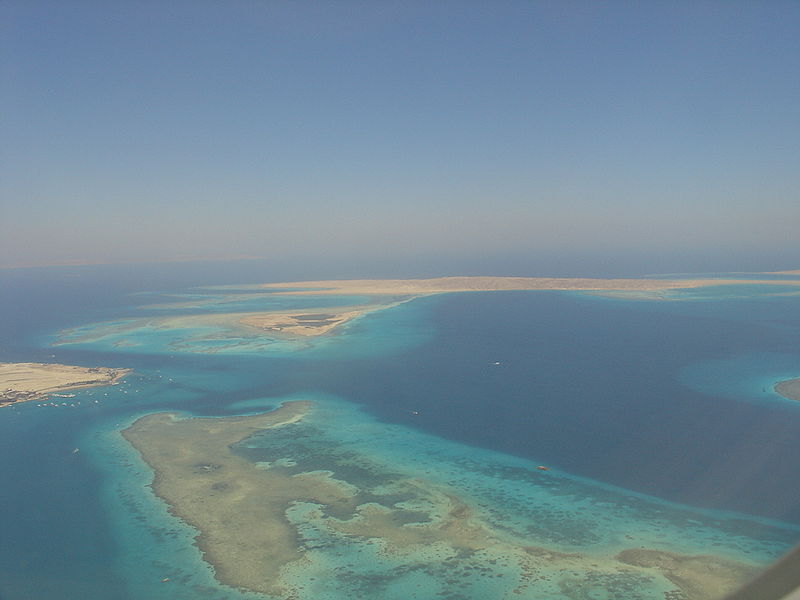

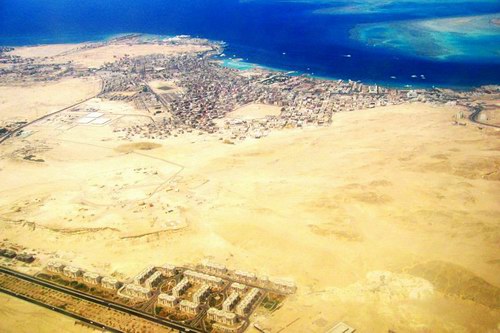
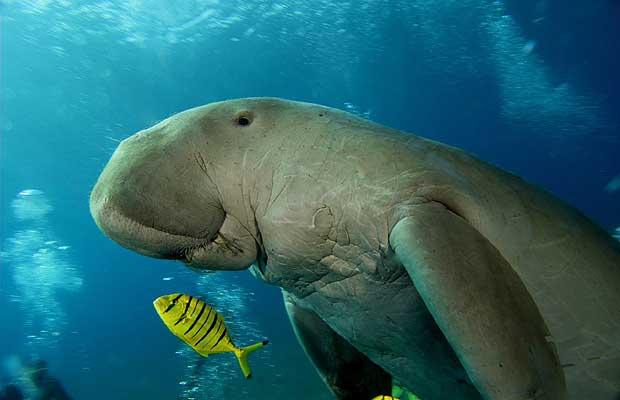
Shaab El Erg
This is a large horseshoe shaped reef north of Hurghada. It is a sheltered site and excellent for micro reef life such as nudibranch. You are also likely to encounter moray eels and blue-spotted stingrays here. Pods of dolphins also frequent the area
Shaab Abu Nohas
Carnatic
Built in Britain in 1862, the Carnatic was a steamship with sails which operated both as a passenger and cargo vessel and plied a route between Suez and Bombay. On the night of 12th September 1869 in strong currents, she ran aground at Sha’ab Abu Nuhas. The following day, the weather deteriorated further and on the 14th September she broke up and sank, with the loss of 31 lives. At the time of her sinking, as well as carrying some 210 passengers and crew, she was carrying a cargo of cotton bales, mail, bottles of wine and soda water as well as £40,000 worth of gold bullion. Indeed, it is believed that some of the gold was never recovered!
Today, she can be found lying at a depth of between 27 and 16m. She is now covered in soft corals but makes for interesting exploration and, while the middle section is broken up, the bow and stern are intact.
Giannes D
The Giannis D crashed into the reef at Sha’ab Abu Nuhas in April 1983 and sank with her cargo of timber. Originally built in Japan in 1969 and called the ‘Shoyo Maru’, at the time of her sinking she was owned by a Greek shipping company, Dumarc, hence the ‘D’ in her name which was painted on the ship’s funnel and can still be seen today.
She lies between depths of 4m and 24m. Dives usually commence at the stern which is very much intact, though completely severed from the midship area which has virtually all broken up. The bow section, too, is also intact, while separated from the rest of the ship. You can visit the engine room in the stern section entering via an opening in the funnel. You can see all the instruments, pipes and machinery in here which are all intact. After exploring the stern, you can swim across the destroyed middle section and take a closer look at the bow, which lies between 12 and 18m.
The ship has been colonised by many soft corals and, consequently, many fish have made the freighter their home. You are likely to encounter schools of glassfish and anthias, lionfish, groupers and Napoleon fish. Moray eels too have made the hull of the Giannis D their home.
Sharm Area
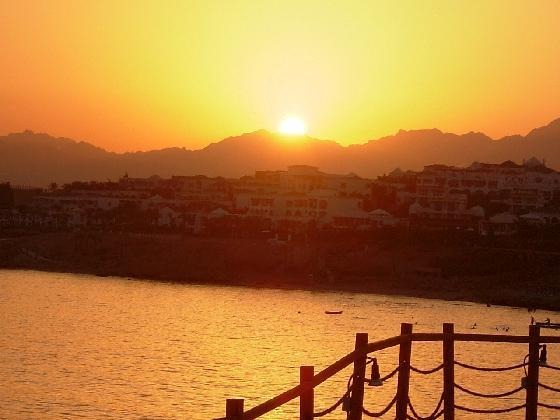
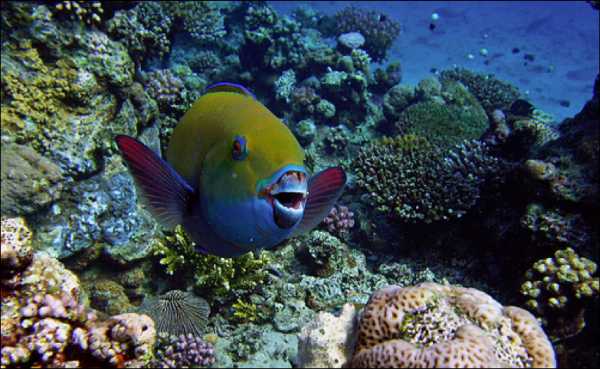
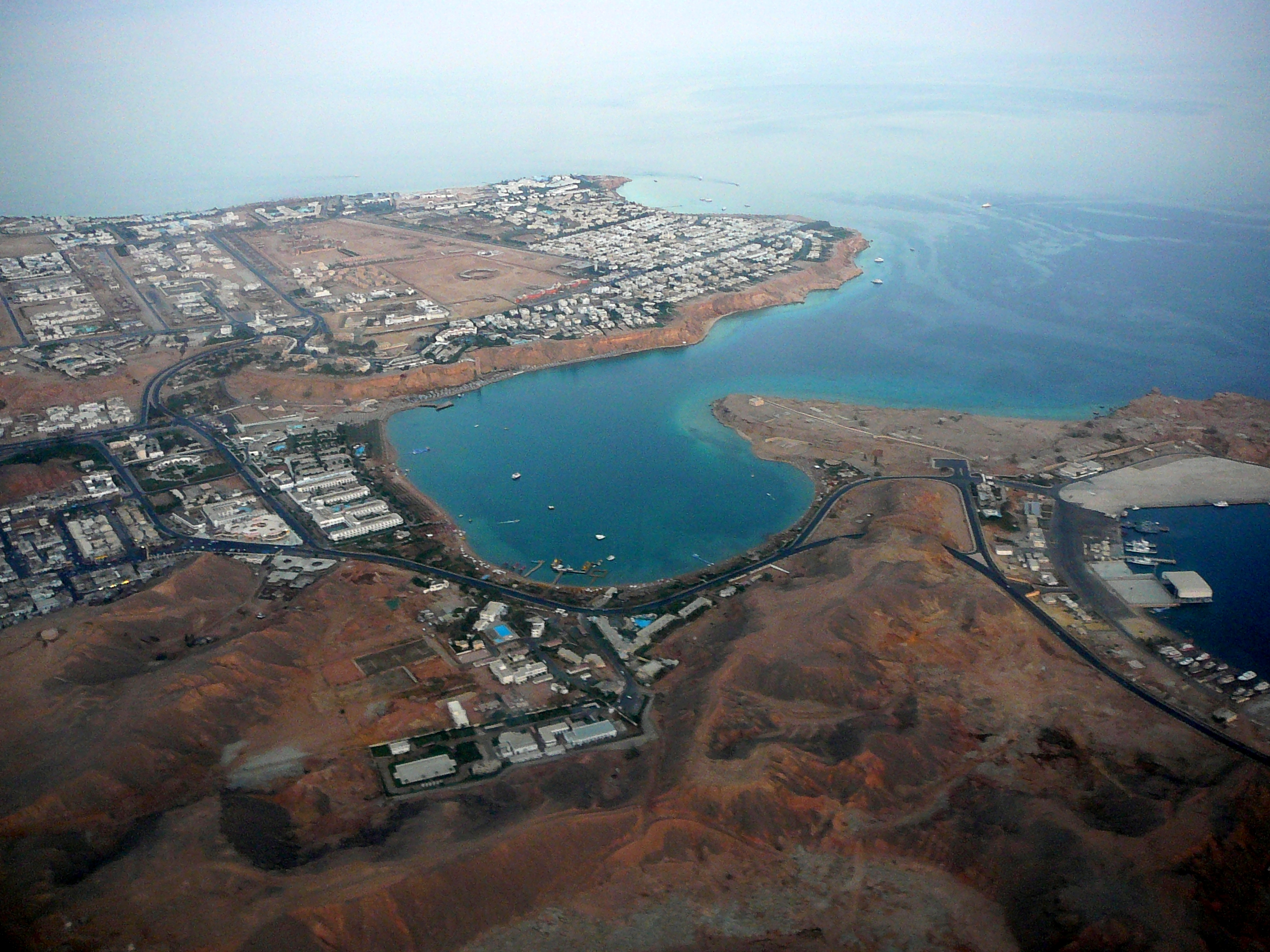
Ras Mohamed National Park
Shark & jolanda
Ras Mohammed is a peninsula of land jutting out into the Red Sea at the southernmost point of the Sinai Peninsula. Most of the Ras Mohammed Peninsula is, in fact, a raised reef plate, indicating that the sea level was once higher than it is today. In 1983 Ras Mohammed was given National Park status, the area the park covers was increased in 1989 to include much of the surrounding seas. There are some 1,000 species of fish and 150 species of coral to be found in the waters here, hence the need for preservation.
World-renowned, no diver visiting the Sinai can afford to miss out the dive sites of Ras Mohammed. There are essentially 6 dive sites here: Ras Za’atar, Jackfish Alley, Eel Garden, Shark Observatory, Anemone City and the world famous Shark Reef and Yolanda Reef.
You can do a variety of dives here and can take in both Shark and Yolanda as well as Anemone City on a single dive. At Anemone City you will, of course, come across sea anemones with their ever-present anemone fish darting in and out of the anemones tentacles. At Shark Reef you can enjoy the Gorgonian fan corals, while looking out to the blue where you can expect to see schools of barracuda, Batfish and Jackfish. Yolanda Reef is named after the Cypriot ship which sank here in 1980 with a cargo of sanitary bathroom ware, cases of whisky and a BMW car. New visitors to the site usually find it amusing to see all the toilets and baths, etc on the sea bed. Blue spotted stingrays are common in the area as are moray eels.
Jackfish Alley
A dive at Jackfish Alley will give you the opportunity to see some caves and watch the fantastic light effects they produce. As well as Jackfish, you may well see Blue spotted stingrays, Triggerfish, Whitetip Reef Sharks and Manta rays.
Tiran area
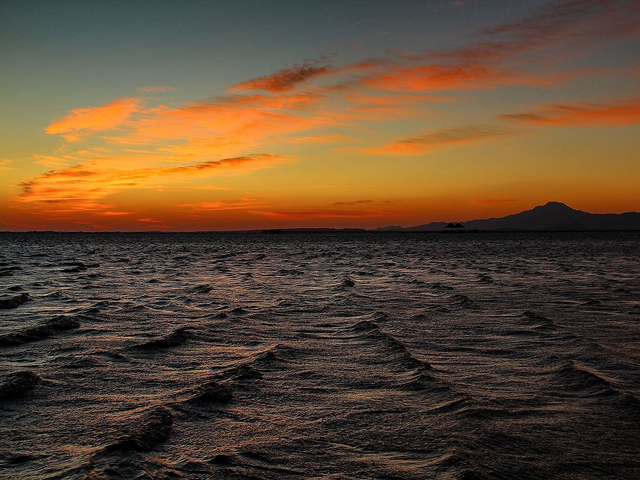
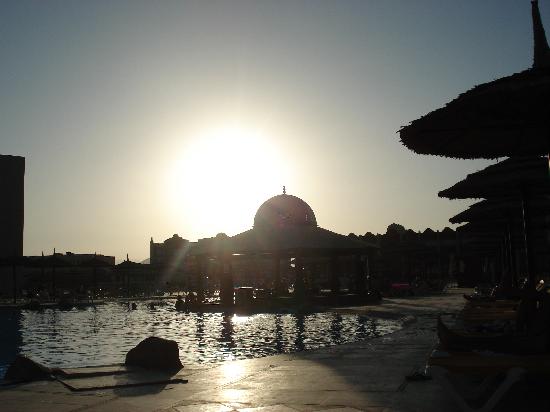
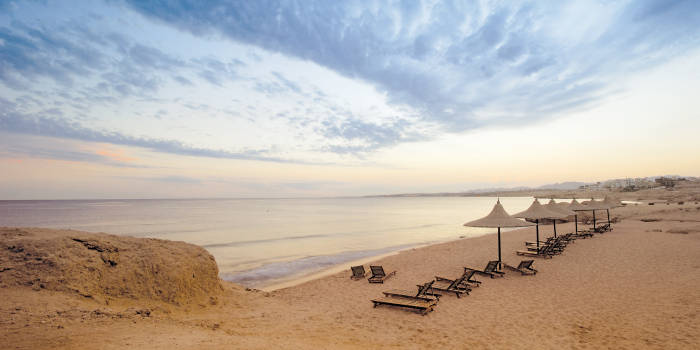
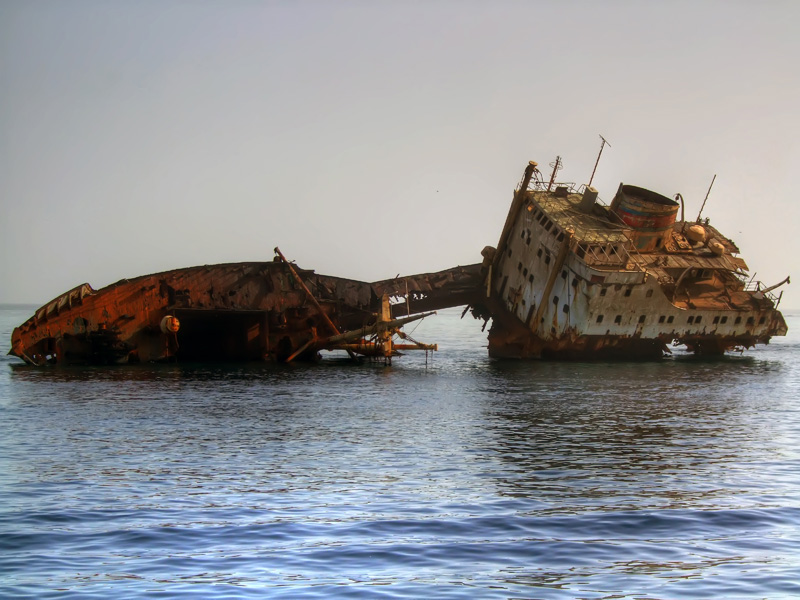
Thomas Reef
Believed to be one of the best dive sites in the northern Red Sea, only drift dives are possible here as there are no moorings. Here you will see a variety of corals including gorgonians, colonies of black coral and large Alcyonarians. It is possible to circumnavigate the entire reef on your dive, weather and currents, permitting. You can expect to see many reef fish including Angelfish and groupers as well as pelagic fish e.g. barracuda and the Whitetip Reef Shark.
Jackson Reef
This is the most northerly reef in the Straits of Tiran and is easily identifiable from the visible wreck on its surface of the merchant ship, Lara, which sank in 1985. Here one can expect to see gorgonian and fire corals. One may spot turtles here and the sharks which frequent this area include the Whitetip and Grey Reef Sharks and Hammerheads, particularly in the summer months from July to September
Brothers Area
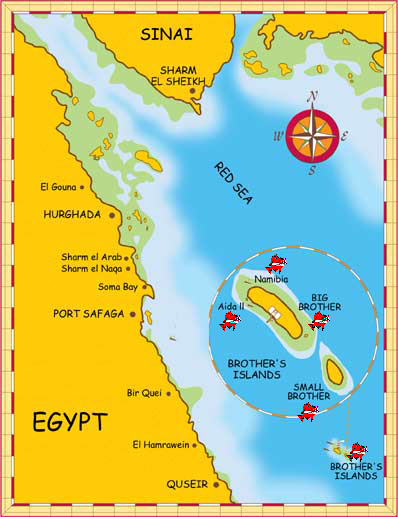
Small Brother
This island is the smaller of the two as the name implies. At the northern end is a long tongue of reef that extends seaward and in good weather it is possible to drop in here and drift. The current runs from east to west and here sharks may be seen cruising. On the south east side is a superb fan coral forest but it is deep and starts at 35m, there are also plenty of caves, overhangs, black coral, and lots of pelagics including sharks, tuna, barracuda, turtles and schools of reef fish. As you round the southern corner the slope gives way to a vertical wall where you can catch a glimpse of a silver tip shark. In summer thresher sharks are seen here, in October grey reef sharks gather to mate and divers have also reported schooling hammerheads and groups of sailfish in this area. Before you know it your computer will tell you it time to head back to the boat having had the most spectacular diving.
Big Brother
The northerly of the two islands and has a small lighthouse. It has two wrecks laying on its walls. At the northern most tip of the island lays a large freighter named the Namibia, the other is the Aida II, an Egyptian supply vessel that struck at night. There is excellent wall diving all along the southern side of the reef with strong currents promoting the growth of a spectacular forest of soft corals. Frequent sightings of big pelagics and an astonishing variety of marine life
Safaga Area
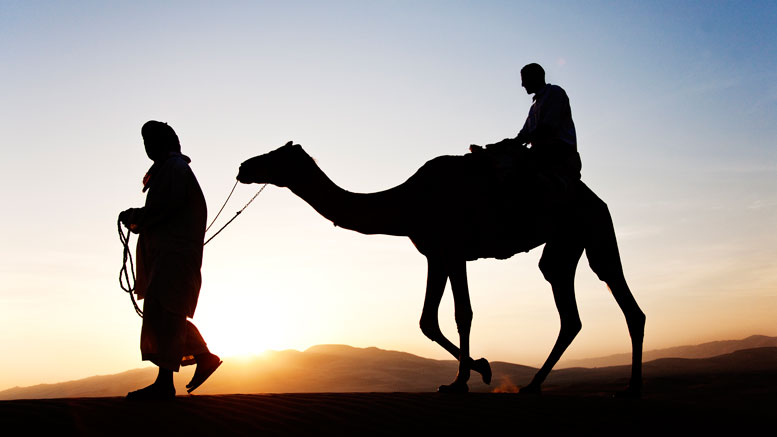
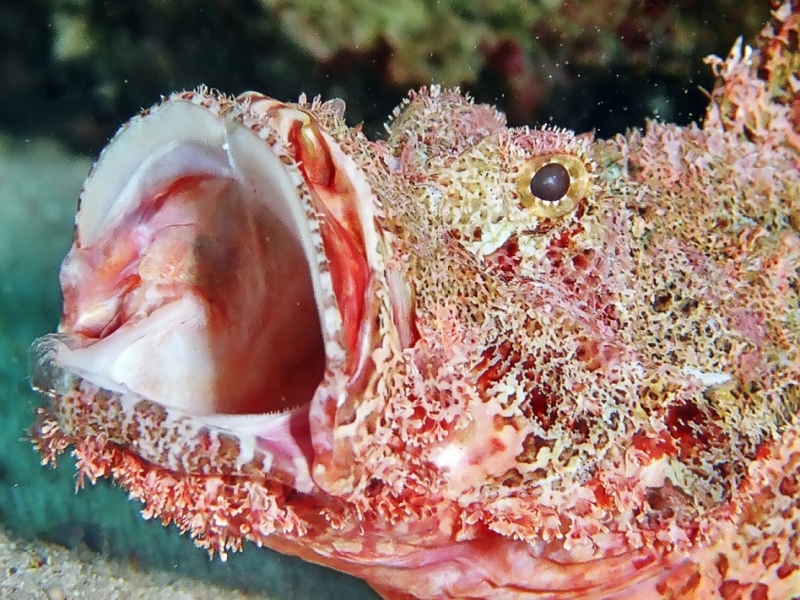
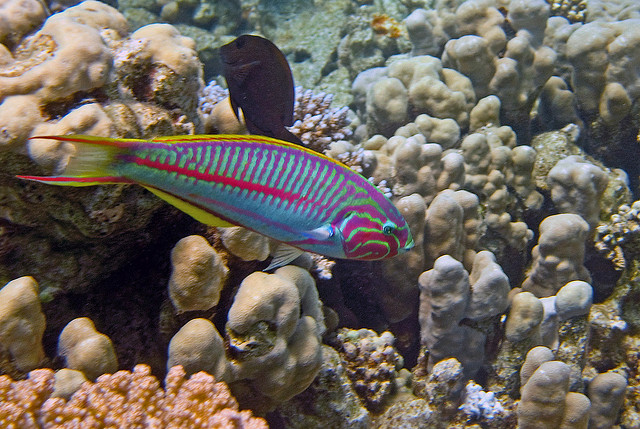
Salem experss
The Salem Express was returning from the port of Jeddah in Saudi Arabia with a party of pilgrims aboard who had visited Mecca when she struck the Hyndman Reef with full force on 15th December 1991. A large hole was torn in the hull just under the bow door and the bow door was forced upward and open, which let in gallons of water resulting in a very fast sinking of around 10 minutes. This meant that was little or no time to launch the lifeboats. According to official sources, there were some 690 passengers aboard but it is believed that the real number could have been as many as 1600. In any case, there were only 180 survivors from this disaster.
The wreck lies on her starboard side at 30m depth, while the port side is in only 10m of water. She remains largely intact – one can see the lifeboats on the seabed, the passenger decks with their seating and the bridge still has all the instrument panels. Inside the wreck, which should only be dived by very experienced wreck penetration divers, one can see many personal possessions which belonged to the passengers aboard such as portable TVs and radio/cassette players, suitcases, bicycles and even cars.
There is some soft coral growth and you will find a few reef species including Lionfish and Butterfly fish but the site is not rich in marine life and diving the wreck, knowing the considerable loss of life which took place here, is a sobering and, somewhat, eerie and sombre experience. Indeed, many divers choose not to dive the site when they hear about the tragedy.
Panorama Reef
Panorama is a very large coral formation, with walls dropping off to more than 100m. You will be dropped off by the zodiac to explore this reef with its profusion of corals including gorgonians. Jackfish, Barracuda and sharks frequent the area. There are also a huge number of anemones here with their resident clownfish.
Hurghada Area
Small Gifton
Small Giftun Island has been a marine reserve for a few years now and it makes a big difference as this is one of the best dives in the area. The wall drops away to about 100m so pick your depth and gradually work your way back up as you drift along in the current. There are some picturesque coral formations sticking out from the main wall to explore, often decorated with soft corals. Tunas & barracuda are some of the inhabitant of this reef
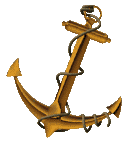 HOME
HOME